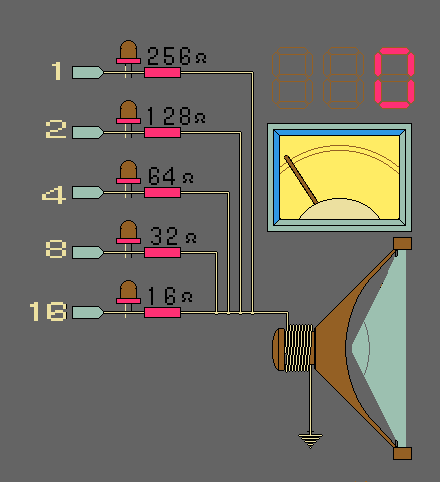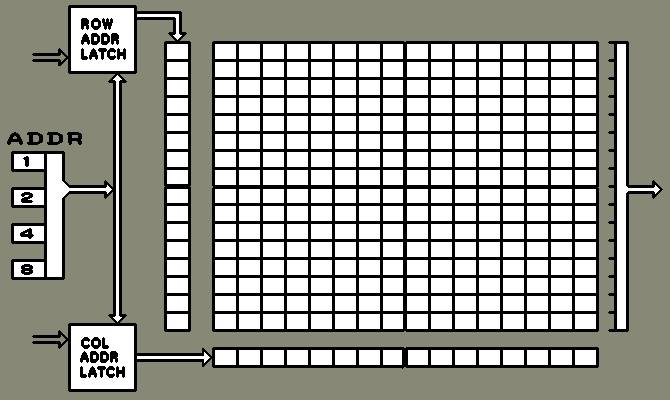|
Assorted Recollections of SAGE:
|
| IBM Poughkeepsie, shipped SAGE, a 113-ton
machine containing thousands of vacuum tubes. SAGE, developed in the Hudson
Valley, processed data from outlying radar defense networks for immediate
evaluation. |
| The SAGE (Semi-Automatic Ground Environment) air-defense computer,
the AN/FSQ-7. When deployed in 1958 this was the first large-scale, real-time
digital computer supporting a major military mission. Some components from
SAGE are mounted in two display cases at SEL. The display case to the right
contains a magnetic core memory -- each tiny magnetic doughnut in this
hand-woven frame is a single bit, so the entire memory board contains only
64,000 bits! In this case are a vacuum-tube logic circuit, and a light
gun which allowed the operator to select a particular track on the cathode-ray-tube
display. The AN/FSQ-7 system weighed 250 tons and had a 3,000 kilowatt
power supply. |
| * DMA in the IBM SAGE (AN/FSQ-7),
IBM SAGE (or AN/FSQ-7, started 1952, operational 1955) - DMA operation
[3]. I/O operations start block transfers of data to/from drum buffers
that proceed in parallel with further CPU operations. A controller
generates the sequential memory addresses for the block and decrements
a counter, while the CPU has a conditional branch to test completion of
the transfer. Transfers are interlocked so that the CPU is stalled if a
second transfer is attempted before the previous one ends. Jacobs
states "the input/output (I/O) break, or memory cycle stealing," was introduced
in SAGE [37], and Serrell, et al., identify "computation in parallel with
I/O" as a significant new feature of SAGE [48]. |
| In 1949, as the Cold War heated up, Whirlwind was given a new mission,
and a new sponsor. The Air Force decided that Whirlwind would be the prototype
and test bed for a new system that would provide computerized electronic
defense against the threat of Russian bombers armed with nuclear weapons.
SAGE, as the new system was named (it stood for Semi- Automatic Ground
Environment) would coordinate radar stations and direct airplanes to intercept
incoming planes. SAGE consisted of 23 "direction centers," each with a
SAGE computer that could track as many as 400 airplanes (distinguishing
enemy planes from friendly ones by keeping track of flight plans).
* Whirlwind and SAGE were breakthrough computers in almost every way.
The SAGE computer used some 55,000 tubes and weighed 250 tons. SAGE had
to handle many different tasks at the same time, sharing central processor
time among them. It gathered information over telephone lines from as many
as 100 radar and observation stations, processing it and displaying it
on some 50 cathode-ray tube screens. The "direction centers" were also
linked to each other by telephone lines. SAGE was an enormous project,
requiring some six years of development and 7000 person-years of programming.
It cost some $61 billion. The phone bill alone was enormous, millions of
dollars each month. SAGE represented not only new technology, but a new
vision of what military defense might be. SAGE was the first time that
a military strategy depended on a computer. It was, writes Paul Edwards,
"more than a weapons system: it was a dream, a myth, a metaphor for total
defense."
|
| The grandfather of all Command-Control- Communication (C3) systems
was an air defense system called SAGE, a rather tortured acronym for Semi-Automatic
Ground Environment. Some of the missiles that operated under SAGE had a
serious social problem: they tended to have inadvertent erections at inappropriate
times. A more serious problem was that SAGE, as it was built, would have
worked only in peacetime. That seemed to suit the Air Force just fine.
SAGE was designed in the mid to late 1950s, primary by MIT Lincoln Lab,
with follow-up development by IBM and by nonprofit System Development Corp.
and Mitre Corp. The latter two were spun off from RAND and MIT, respectively,
primarily for this task. SAGE was clearly a technological marvel for its
time, employing digitized radar data, long distance data communications
via land lines and ground-to-air radio links, the largest computer (physically)
built before or since, a special-purpose nonstop timesharing system, and
a large collection of interactive display terminals. SAGE was necessarily
designed top-down because there had been nothing like it before -- it was
about 10 years ahead of general purpose timesharing systems and 30 years
ahead of personal computers and workstations. |







